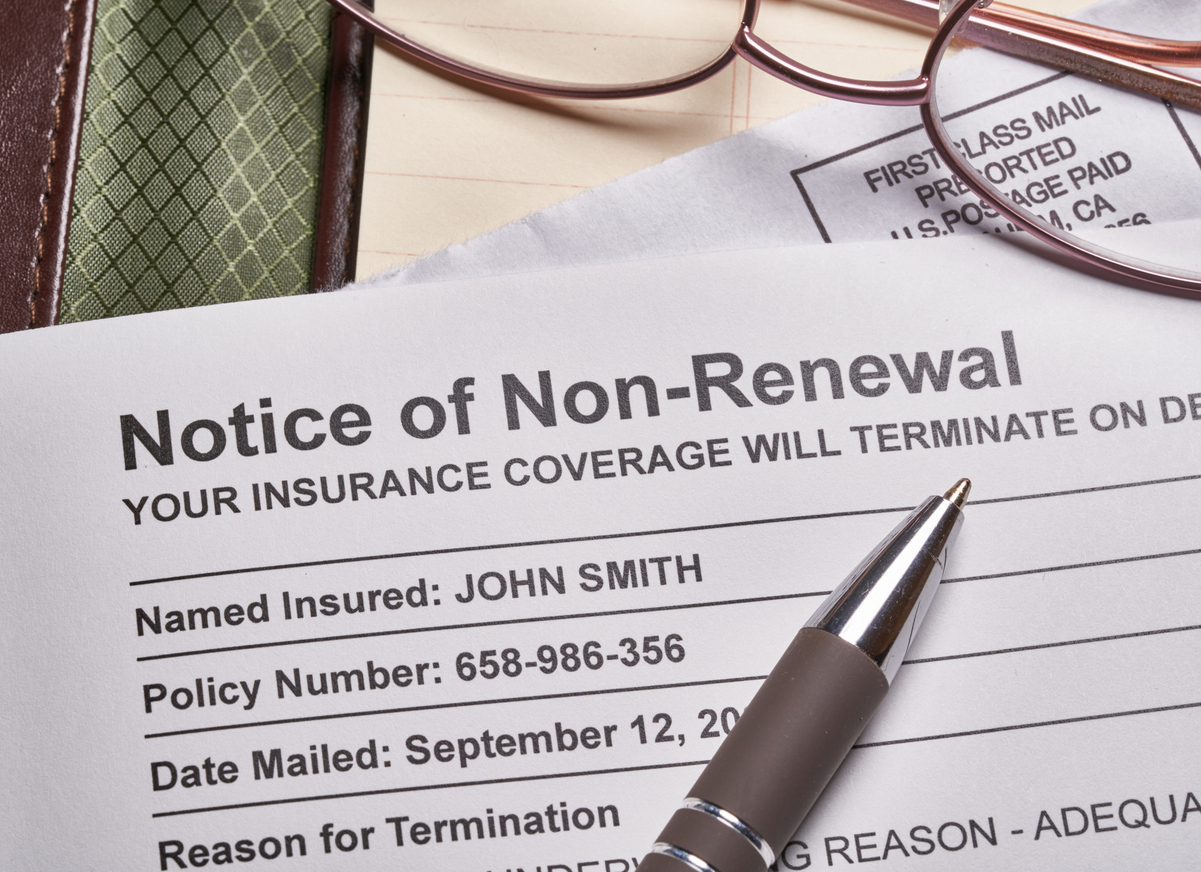We are happy to share with the insurance world a very positive development on COVID-19 Business Interruption cases – from Orange County, a conservative jurisdiction. The credit for this victory goes to our friends at Covington & Burling LLP, who we have been working closely with to advance justice for policyholders. A special shout-out is owed to Rani Gupta, Joan Li, David Goodwin, and Jad Khazem for this win, as the specific allegations of physical alteration were the driving force behind the victory and are instructive for future success.
The court also took seriously the law that doubts about coverage be resolved in favor of the insured, and that because this order came upon a demurrer (i.e., a motion to dismiss), the factual record was not developed enough to grant the demurrer and close the matter this early. The order is also a rebuke to federal court orders to the contrary.1 Judge Peter J. Wilson authored the opinion.
The case, Goodwill Industries of Orange Cty. v. Philadelphia Indemnity Ins. Co., Case No. 2020-01169032, involves the classic scenario – a loss of business income due to COVID-19. Goodwill’s complaint “expressly alleges the coronavirus and COVID-19 caused direct physical loss and damages to its property,” contending that the virus is “contained in respiratory droplets called aerosols that stay on surfaces and in the air up to a month, physically alters the air and surfaces to which it attaches, and causes them to be unsafe, deadly and dangerous.” The complaint also cites emerging research, noting that “researchers have begun to develop technology to test for the presence of COVID-19 on the surfaces of buildings” and that the virus “was present at [Goodwill’s] properties at the time of the State and County closure orders, that when Plaintiff reopened its properties, its employees tested positive, and that it was required to conduct additional cleaning and sanitization to respond to and remove the” virus “from physical surfaces in its insured premises and properties with public health orders that require such measures to protect against the” virus.
According to the court, these allegations sufficiently allege coverage. Importantly, the court went on to criticize how federal courts have approached these cases, noting that “California federal cases have interpreted MRI Healthcare2 to require physical change in the property and permanent dispossession[.]” Judge Wilson rejected the application of MRI Healthcare here, noting that the federal cases “were decided under a different standard” and that while they are “instructive, the allegations in those cases were largely distinguishable from those here.” Judge Wilson noted that cases such as 10E,3 Mudpie,4 West Coast Hotel Management,5 and Pappy’s6 are distinguishable because they did not allege any physical change of property condition.
“More importantly,” Judge Wilson explained, “given the high standard that must be met to prevail on a demurrer on an insurance policy, any doubts must be resolved in favor of the Plaintiff. The Court is not satisfied that there is a sufficiently full record at this demurrer stage to make the determination as a matter of law that the coronavirus and COVID-19 have not, in some manner, caused physical damage to property.”
The decision’s emphasis on siding with policyholders when in doubt is a well-established principle in California law, and many other states. For instance:
- Cal. Civ. Code § 1649: “If the terms of a promise are in any respect ambiguous or uncertain, it must be interpreted in the sense in which the promisor believed, at the time of making it, that the promisee understood it.” This rule, as applied to a promise of coverage in an insurance policy, protects not the subjective beliefs of the insurer but, rather, the objectively reasonable expectations of the insured.”7
- “Ambiguities in coverage clauses are normally resolved by giving effect to the insured’s reasonable expectations: “[W]e generally interpret the coverage clauses of insurance policies broadly, [in order to protect] the objectively reasonable expectations of the insured.”8
- Conversely, exclusions and limitations on coverage in an insurance policy are “strictly construed against the insurer and liberally interpreted in favor of the insured.”9
- Where the policy provision has no “plain and clear meaning” and the insured had no “objectively reasonable expectations” regarding coverage—then and only then will the court “invoke the principle that ambiguities are generally construed against the party who caused the uncertainty to exist (i.e., the insurer) in order to protect the insured’s reasonable expectation of coverage.”10
- This “tie-breaker” rule of construction against the insurer stems from the recognition that the insurer generally drafted the policy and received premiums to provide the agreed protection.11
- The result is that “[i]n the insurance context, we generally resolve ambiguities in favor of the insured.”12
- There is a strong need to protect the reasonable expectations of insurance purchasers.13
- “[A] contract entered into between two parties of unequal bargaining strength, expressed in the language of a standardized contract, written by the more powerful bargainer to meet its own needs, and offered to the weaker party on a ‘take it or leave it basis’ carries some consequences that extend beyond orthodox implications … [I]n view of the disparate bargaining status of the parties, we must ascertain that meaning of the contract which the insured would reasonably expect.”14
- Provisions that take away or limit coverage reasonably expected by the insured must be “conspicuous, plain and clear” to be enforceable.15 “An insurer cannot escape its basic duty to insure by means of an exclusionary clause that is unclear … The burden rests on the insurer to phrase exceptions in clear and unmistakable language … The exclusionary clause must be conspicuous, plain and clear.”16 Even an unambiguous exclusion will not defeat coverage if it is not “conspicuous” and understandable to a layperson.17
- Standard-form insurance policies are adhesion contracts between parties of unequal bargaining power. Public policy requires that the weaker party’s reasonable expectations be protected. Therefore, clauses negating reasonably expected coverage must be “conspicuous, plain and clear.”18
We look forward to the law continuing to develop in this positive way.
_______________________________________________________
1 Click here for a copy of the tentative ruling which the court adopted in full.
2 MRI Healthcare Center of Glendale v. State Farm Gen. Ins. Co. (2010) 187 Cal.App.4th 766.
3 10E, LLC v. Travelers Indemn. Co. of Connecticut (C.D. Cal. September 2, 2020, Case No. 2:20-cv-04418-SVW-AS) __ F.Supp.2d __, 2020 WL 5359653.
4 Mudpie, Inc. v. Travelers Casualty Ins. Co. of America (N.D. Cal. September 14, 2020) 2020 WL 5525171.
5 West Coast Hotel Management, LLC v. Berkshire Hathaway Guard Insurance Companies (C.D. Cal. October 27, 2020, CaseNo. 2:20-cv-05663-VAP-DFMx) ___ F. Supp.3d ___, 2020WL 6440037.
6 Pappy’s Barber Shops, Inc.v. Farmers Group, Inc. (S.D. Cal. September 11, 2020,Case No. 20-cv-907-CAB-BLM) 2020 WL 5500221.
7 Bank of the West v. Sup.Ct. (Industrial Indem. Co.) (1992) 2 Cal.4th 1254, 1264-1265.
8 Montrose Chem. Corp. of Calif. v. Admiral Ins. Co. (1995) 10 Cal.4th 645, 667.
9 Delgado v. Heritage Life Ins. Co. (1984) 157 Cal.App.3d 262, 271.
10 Powerine Oil Co., Inc. v. Sup.Ct. (Central Nat‘l Ins. Co. of Omaha) (2005) 37 Cal.4th 377, 391; Cal. Civ. Code § 1654.
11 Minkler v. Safeco Ins. Co. of America (2010) 49 Cal.4th 315, 321.
12 AIU Ins. Co. v. Sup.Ct. (FMC Corp.) (1990) 51 Cal.3d 807, 822.
13 Id. at 22.
14 Gray v. Zurich Ins. Co. (1966) 65 Cal.2d 263, 269-270; see also Abellon v. Hartford Ins. Co. (1985) 167 Cal.App.3d 21, 31.
15 De May v. Interinsurance Exchange, 38 Cal.Rptr.2d 581, 32 Cal.App.4th 1133 (Cal. App. 1995) ; Travelers Cas. & Sur. Co. v. Transcontinental Ins. Co. (2004) 122 Cal.App.4th 949, 958.
16 State Farm Mut. Auto. Ins. Co. v. Jacober (1973) 10 Cal.3d 193, 201-202; Haynes v. Farmers Ins. Exch. (2004) 32 Cal.4th 1198, 1204; Essex Ins. Co. v. City of Bakersfield (2007) 154 Cal.App.4th 696, 705.
17 Steven v. Fidelity & Cas. Co. of New York (1962) 58 Cal.2d 862, 878; Ponder v. Blue Cross of Southern Calif. (1983) 145 Cal.App.3d 709, 719.
18 Gray v. Zurich Ins. Co. (1966) 65 Cal.2d 263, 271.




